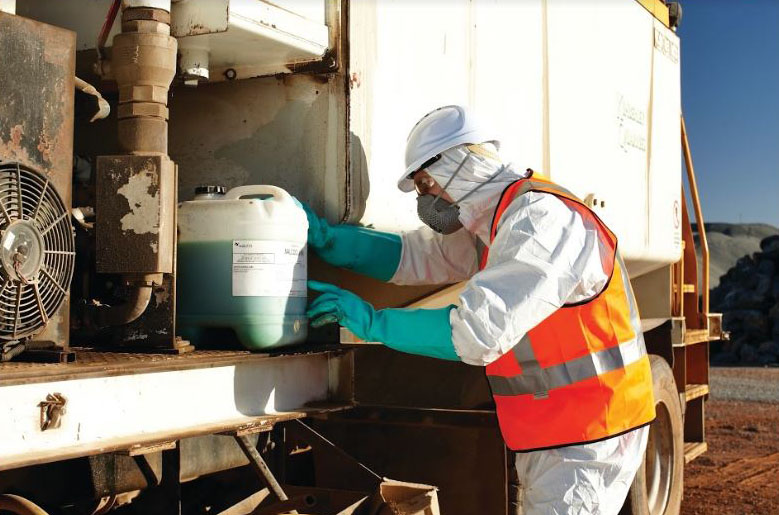Chemicals Causing Hearing Loss: Ototoxins

Ototoxins in the Workplace
Indeed, many ototoxins, commonplace chemicals, cause hearing loss, tinnitus, deafness and vertigo. Surprisingly, people are often unaware of the health risks despite being at risk of exposure.
Ototoxic chemicals, which can be found in substances such as paints, thinners, degreasers, glues and engine exhaust, travel through the blood stream once they have entered the body and can result in damage to the auditory nerves or the cochlear in the inner ear.
Accordingly, current estimates suggest that more than 750 chemical groups are potentially ototoxic, including some medications, although studies have only analysed a few of them in depth.
Subsequently, the prevalence of combined noise and chemical exposure in workplaces is one of the reasons why research into chemical-induced hearing damage has only started to receive increased attention in recent decades.
Naturally, exposure to both noise and ototoxins increases the likelihood of hearing damage. However, Australian exposure standards have not yet been revised to take this into consideration.
Until standards are updated, the Managing Noise and Preventing Hearing Loss at Work Code of Practice recommends that the daily noise exposure for workers with a dual noise and chemical exposure is reduced to 80 decibels or less (the maximum exposure is usually 85 decibels). Moreover, audiometric testing and information on ototoxins must be provided to workers.
Regardless of noise exposure, the Code of Practice recommends workers with an airborne exposure to ototoxins of 50% or more of the chemical’s exposure standards should receive an annual audiogram.
If there is no air monitoring, then employers need to carry out annual audiograms. For instance, when exposure is difficult to estimate. As well as when ventilation efficiency is unknown. Or lastly, when workers report health concerns that may be due to ototoxins.
Ototoxic Substances and Their Symptoms
In general, workplace ototoxins can be divided into three major categories: solvents, heavy metals and asphyxiants.
Additionally, ototoxins enter the body through inhalation, skin absorption and ingestion. Not to mention, those which can be absorbed through the skin are considered particularly hazardous because of the increased exposure risk.
Aside from varying degrees of hearing impairment and the ringing in the ears known as tinnitus, ototoxins can also cause balance problems.
In fact, symptoms that indicate this might be occurring are headaches, dizziness, blurry or changed vision, and feeling lightheaded or weak. Likewise, mobility issues manifest and include an inability to walk or walking with legs far apart to steady yourself, difficulty moving your head, problems walking in the dark and feeling a ‘fullness’ in the ear.
Dangerous Industries and Risk Reduction
As an illustration, dangerous industries include painting, boat building, construction, furniture making, printing, metal, fibreglass and leather production. Similarly, aircraft maintenance, fuelling vehicles and aircraft, radiator repairs and pesticide spraying are also occupations that have high exposure to ototoxicity.
In this light, applying controls like substitution, isolation and local ventilation prevent or reduce harmful exposure. Of course, personal protective equipment (PPE) appropriate to the chemical, such as face masks or gloves. should be worn. Ultimately, PPE reduce skin and respiratory absorption where other measures are insufficient.
Furthermore, implementing more control measures is possible. For example, substituting water-based products instead of solvent-based products. Another, education about the chemicals being used and their risks, and following all the safety directions for the specific chemical in use.
To enumerate, some workplace ototoxic substances are listed in the table below:
| Note: italics indicates that the substance can be absorbed through the skin | ||
Solvents |
Metals |
Asphyxiants |
| Butanol | Arsenic – parasites, microorganism inhibiters | Acrylonitrile |
| Carbon disulphide – pesticides | Lead | Carbon monoxide – vehicles, cigarette smoke, welding, gasoline tools, cooking stoves, as well as clothes dryers |
| Ethanol | Manganese | Hydrogen cyanide |
| Ethyl benzene | Mercury | Organophosphates |
| n-heptane | Organic tin | Paraquat |
| n-hexane | ||
| Perchloroethylene | ||
| Solvent mixtures and fuels Stoddard solvent (white spirits) | ||
| Styrene – plastics and insulating material | ||
| Toluene – paints, lacquers, adhesives, rubber, leather tanning, spray paint as well as other products | ||
| Trichloroethylene – dry cleaning, spot remover, rug cleaners, paints, waxes, pesticides, as well as lubricants | ||
| Xylenes – paints, varnishes, and thinners | ||
Sourced from information contained in the Managing Noise and Preventing Hearing Loss at Work Code of Practice, Appendix A and the Audiology Information Series: Chemical Exposure Effects on Hearing and Balance.








































































